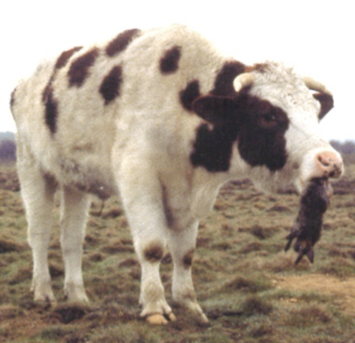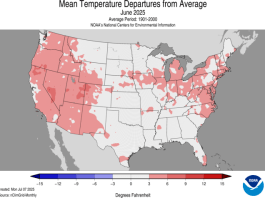
My husband and I spent the Memorial Day Weekend in Oregon with our friend John Marble. We spent three days wandering around the ranch, looking at grass and cattle, talking about all the ranch projects John has in the works, and enjoying the beautiful Oregon spring. I’ll share some of the ranch projects later, but this week I want to talk about my favorite thing: Moving cows!!
We did two moves of the 125 or so heifers John is custom grazing. The first was across multiple pastures full of really good grass to a pasture near the house. John wanted to reduce the grass in that pasture as insurance against summer fires. The second move was from that pasture to an adjacent one through a middle of the fence gate. Both were accomplished with no fuss, and only a little bit of walking. All we had to do was call “C’mon girls!” and lead them along with the truck, in the case of the multi-pasture move, or me walking in front of them for the small move. I did have to get out of the truck once during the multi-pasture move to encourage a small group to move out of the shade of a clump of trees and continue on their walk. But it was just a leisurely morning stroll.

Of course this flies in the face of the picture we have of cowboys in the west, mounted on their horses and riding behind the herd, pushing them along. We didn’t use any of the fancy techniques taught by low-stress livestock herders. And yes, I’m trained in them by Bud Williams himself, and I’ve used them to move cattle across 500 acre pastures. But after all these years, I find that leading cattle is so much easier and much more fun than herding them. It just makes me smile to be able to holler, “C’mon girls!” and watch them amble out of the woods, and slowly make their way to the truck.
So – that’s what this week is about: simple techniques for moving livestock that anyone can use with no training at all. I’ve also added a bit about helpful infrastructure for when you need to handle your livestock.
Enjoy!
Teaching Livestock to Come When Called
We’ll start with a short little exercise John does when a new herd arrives at the ranch in the spring.
Leading Instead of Herding – Why and How to Teach Your Livestock to Follow
Does it work across long distances or larger pastures? Here’s what I’ve learned. The first piece
Calling and Leading Livestock Over Long Distances – It’s Easy!
Because I began my career as a linguist, I think of this training as a kind of language. In case that’s helpful to you, here are some additional training tips. Plus, I always enjoy videos of coming running when they hear me calling them. 🙂
Tips for Training Livestock to Come When Called (and do other helpful things)
Is it Expensive?
For those folks who want to know the economics, here you go. John did a study that shows how much time you can save when animals are trained to come when called.
Calling and Leading Cattle is More Time and Cost Efficient Than Herding
Paddocks and Infrastructure
Everything is even easier if you have your infrastructure set up to be easy for livestock and humans to maneuver around and through. John has some suggestions for gate set ups and paddock design that have worked for him.
John typically works alone, so when it comes time to move livestock into handling facilities, he’s made a few simple, inexpensive additions to his infrastructure to make things easy. Check the comments for John’s response to a low-stress livestock handling purist about why these kinds of additions should be encouraged, not looked down on.
Enhanced Livestock Handling Facilities for the Single Man/Woman (With or Without Short Legs)
John continues describing helpful handling infrastructure here, where he lays out how he was able to add a BudBox to his existing facilities and how easy it made his life.
So there you go! A series of stories about how “talking” to your livestock, in concert with some thoughtful infrastructure can make livestock moves and handling easy as pie.




